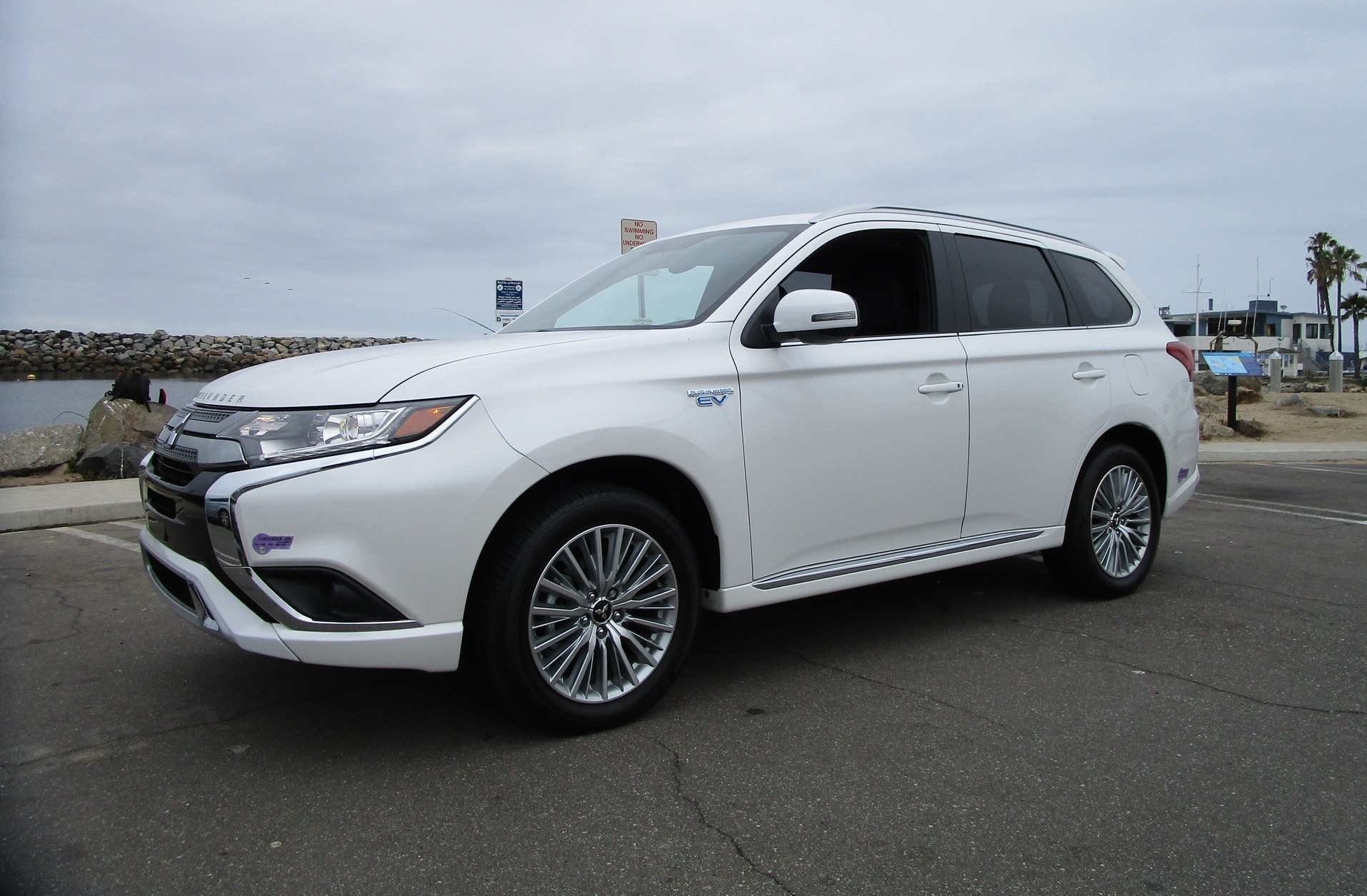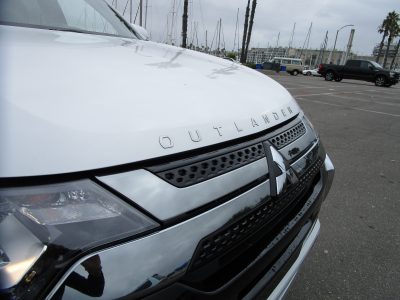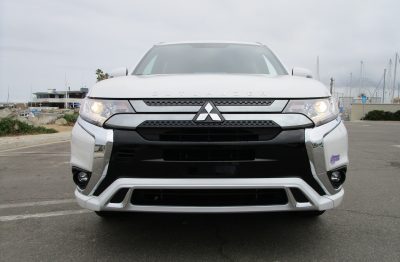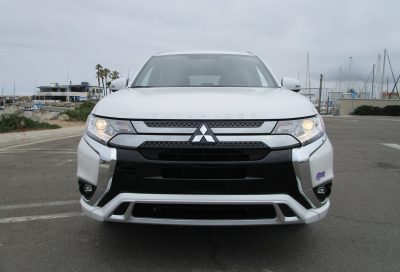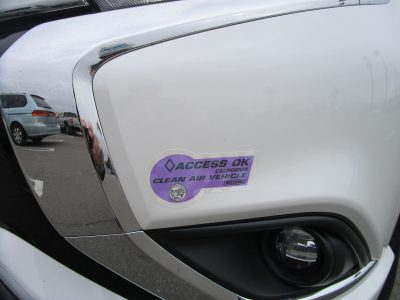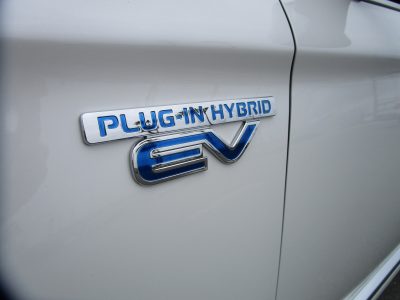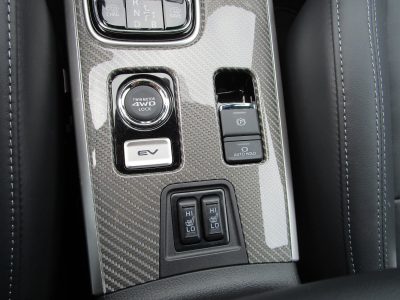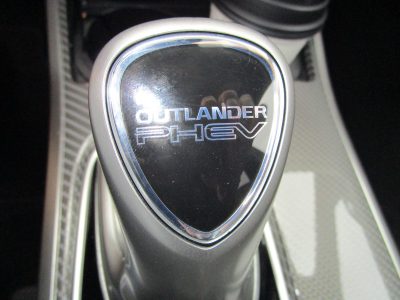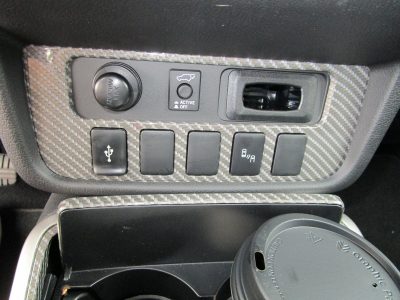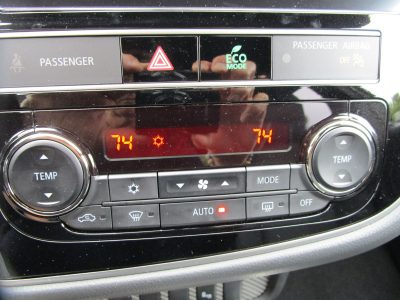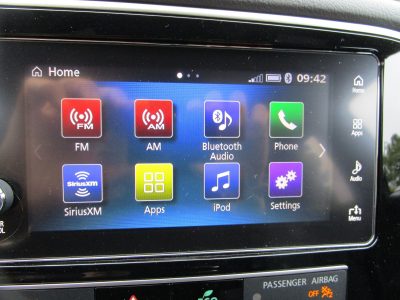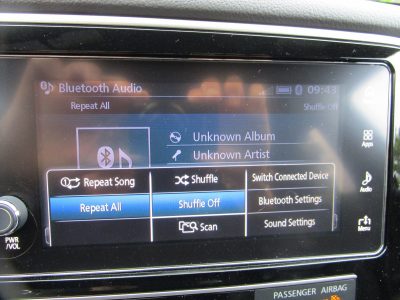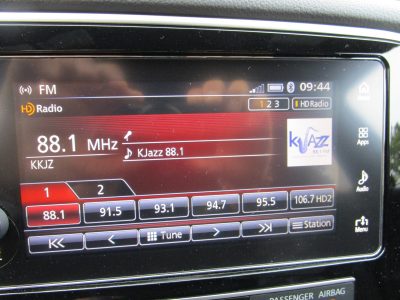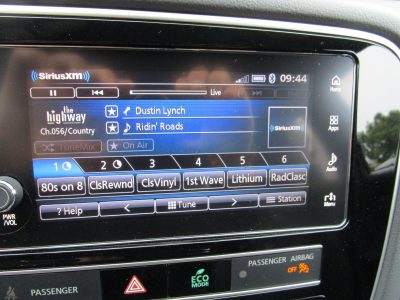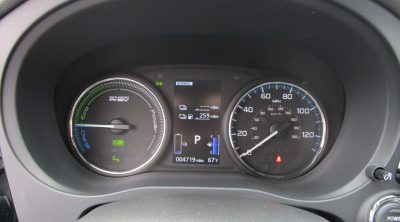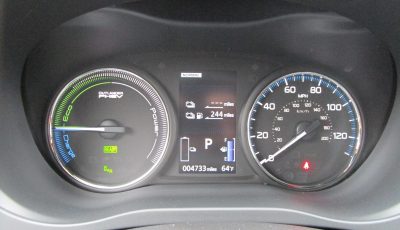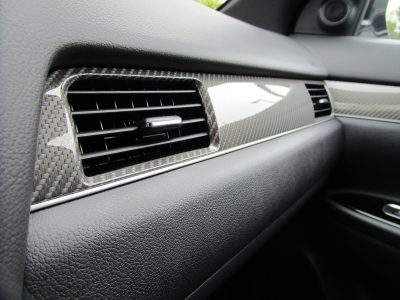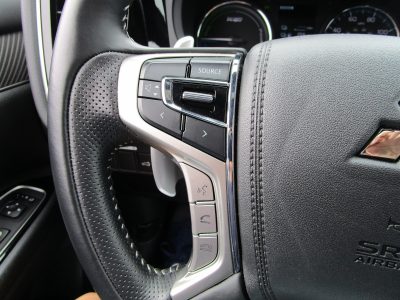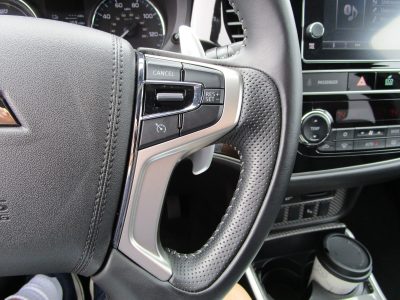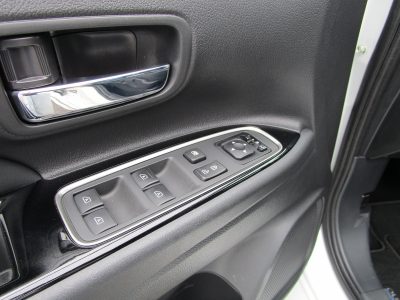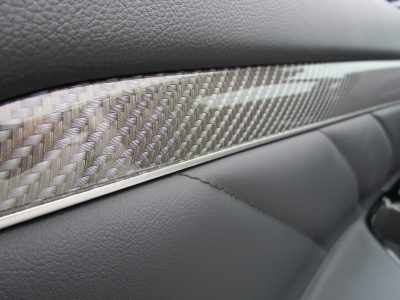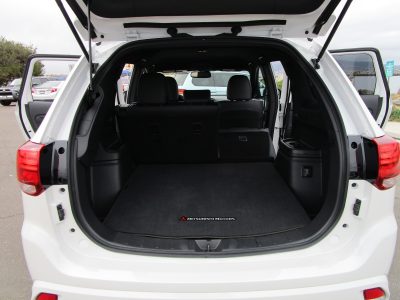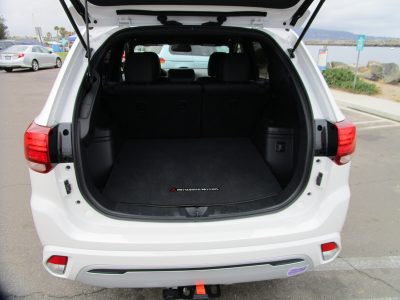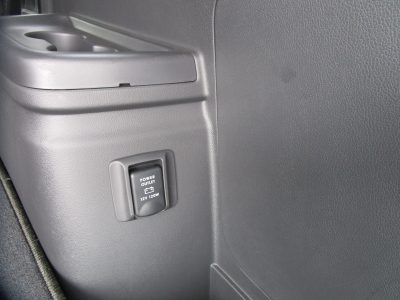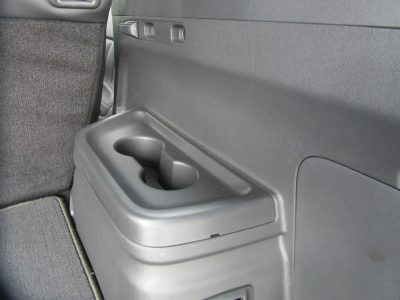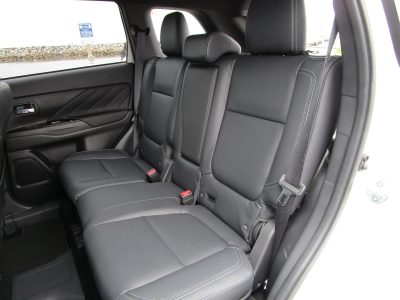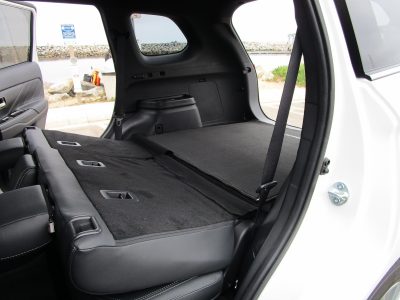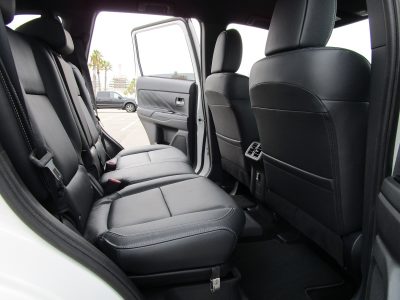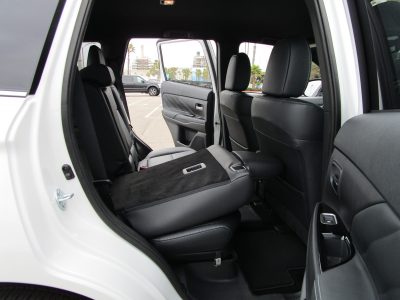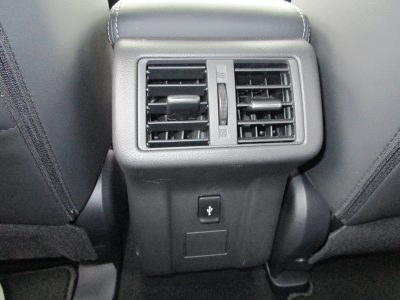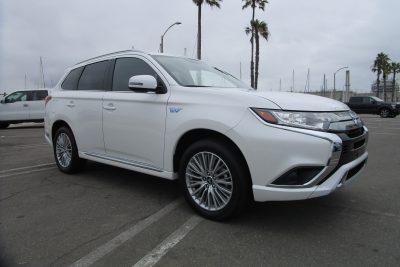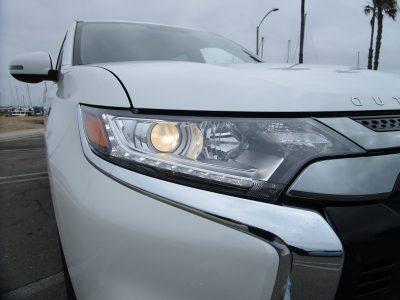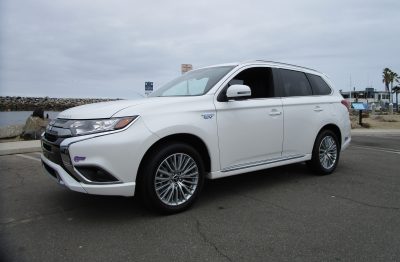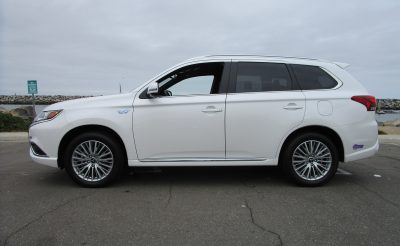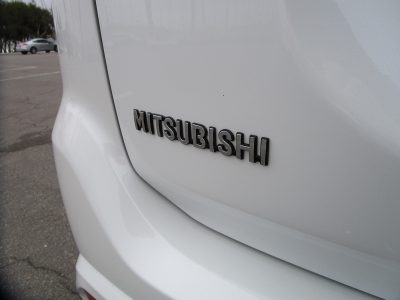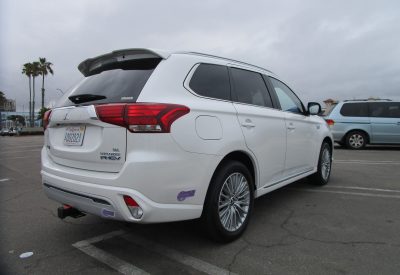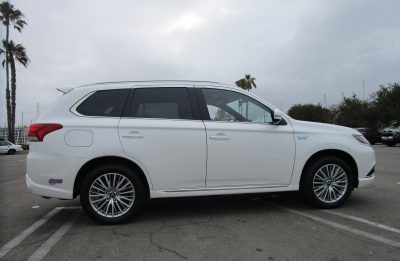Quick! What’s the world’s best-selling Plug-in Hybrid?
If you’re like us, you probably said the Toyota Prius. I mean, they pretty much own all things hybrid, no? No.
Surprise! It’s the Mitsubishi Outlander.
Which was a surprise to us, too. Mitsubishi is one of the smaller players in the U.S. – until recently when Nissan bought a large share of it. (For those playing at home, Renault is a 43% owner of Nissan, while Nissan owns 34% of Mitsubishi).
Those deeper pockets are sure to see investment in Mitsubishi, and a rosier future for the brand. We already felt the beginnings of this when we tested the highly-enjoyable Eclipse Cross recently.
Fresh, yet Familiar
The Outlander has been with us for some time now, and it’s a pleasant design. For 2019 the front end has been freshened, and it gives off a little bit of a Range Rover vibe, with OUTLANDER spelled out in big letters above the grille.
Our tester looked classy in its extra-cost Pearl White color. With such noted extroverts as the all-new Toyota RAV4 turning heads, we were pleasantly surprised that the tasteful, reserved Mitsu got plenty of compliments.
Upgraded and Upscale
Inside, the Outlander makes the most of an older design with some solid steps into premium country. The seats are redesigned for greater support, there’s some nice faux carbon fiber trim for a sporty feel, and there are nice touches like illuminated window controls, a rear USB port and new leather seats that make you feel well looked after.
Typical Mitsubishi – at first it doesn’t look as flashy as other SUV’s, but after a couple days, you get into the simple logic of the controls, the ease of use. It’s a friendly, if not eye-catching place to be. If you’re looking for a 3rd row seat it’s available, but not on the Hybrid models. Blame the additional space the battery and hybrid system take up.
Connectivity is up to date with a 7-inch display and Apple CarPlay and Android Auto. It does look a generation old compared to some of the newest competition, but it works well.
There is a cool party trick If you’re willing to pop for the more expensive GT trim level. You can tap into the Outlander PHEV’s big battery to create an exclusive 1500-watt AC power supply that can power an LED TV or other devices – perfect for tailgating in style!
Well, we didn’t have the GT, but we did appreciate not only the comfort of reclining second row seats, but impressive storage with up to 66.6 (devilish, no?) cubic feet of cargo space. A generous cargo door and low floor low make for easy loading. For comparison, the Kia Niro Plug-in Hybrid serves up 54.5 cubic feet.
Advanced and Capable
So far, the Outlander has been nice, and the updates help keep a vehicle that feels a little long in the tooth, less toothsome. But when it comes to the hybrid system, this Mitsubishi is state-of-the-art. Power is supplied by a combination of twin 80-horsepower electric motors – one at the front, one at the rear – fed by a 12kw lithium ion battery. Under the hood, there’s a 117 horsepower, 2.0-liter, 4-cylinder engine.
Depending on driving need, the system shuffles between a 100% electric EV, Series Hybrid or Parallel Hybrid. Don’t worry, it figures this out on its own. You do have a choice of two driver-selected battery modes, Battery Save and Battery Charge that will charge the battery via the engine, or use the engine to maintain the remaining battery charge.
There’s also a driver-selectable EV mode that prioritizes the system for 100% electric driving. You can get some good distance on it, too. On full charge, Mitsubishi says the Outlander can go up to 22 miles in pure EV mode.
To squeeze out the maximum juice, you can use the paddle shifters to ratchet up the regenerative braking and help keep the battery charged. In B5, the most aggressive setting, lift off the gas and it’s like a bumper car, slowing you down with serious intent. It won’t bring you to a complete stop, say like a Nissan LEAF, but you do get most of the benefits of one pedal driving, and it’s the kind of fun you can’t get in a non EV/ Hybrid vehicle.
The other part of the fun, is how smooth the Outlander runs. It’s constantly shuffling between modes – engine on, engine off, pure EV – but it’s all done is such an efficient, quiet manner, you seldom notice. It may not be the fastest EV, but it is so smooth and silent, you just glide along happy as a clam. At high tide.
When it comes to charging, you’ll also be a blissful bivalve, with standard Level 3 DC Fast Charging, which can give you up to 80% battery capacity in about 25 minutes. The more common Level 2 charger will give you a full battery in about 3.5 hours (perfect for the office), and you can even charge with the included 120-volt cord, but that will take 8 hours. Perfect for overnight.
And if you don’t have time to plug-in, the Battery Charge mode can give you a full-charge on-the-go in about 2 hours. But you’ll be running the gas engine full-time. Which kind of defeats the purpose.
The rest of the drive goes along with the smooth and steady vibe. The Outlander has a soft, supple ride, and it’s comfortable for long drives. The standard all-wheel drive adds confidence in foul weather, and you even can tow up to 1,500 lbs. Call it 4-season capable.
You’ll also feel confident with a nice suite of standard safety features, including Blind Spot Warning with Lane Change Assist and Rear Cross Traffic Alert. Opting for the more expensive GT model adds Adaptive Cruise Control, Forward Collision Mitigation and Lane Departure Warning. Worth considering.
Sensible, plus Affordable
There is a price to be paid for all this technology, but it’s a reasonable one. Our Outlander PHEV SELS S-AWC started at $35,795. With standard leather, 8-way power front seats, connectivity, and safety, It’s a nice package. Add $295 for the Pearl White Paint, $1,095 for Destination, and we rang the bell at $37,185. A couple of things to sweeten the deal; Mitsubishi’s got your back with a limited powertrain warranty for 10-years / 100,000 miles. Plus, where applicable, you qualify for the HOV carpool lane sticker.
If you fancy a more upscale experience, the Outlander PHEV GT model adds more creature comforts and safety gear, and starts at $41,945.
Competition for our SELS would include the Kia Niro EX plug-in, which starts at $32,100. We like the NIRO’s driving dynamics, but it is a bit smaller than the Outlander, and is not available in all-wheel-drive.
For that, you’d have to look at the Mini Cooper S E Countryman ALL4, which rings in at over $42,000, comparably equipped. Gulp. The closest pricewise, would be the Subaru Crosstrek plug-in hybrid, tipping that scales at $35,970. It’s also notably smaller, offering only 43.1 cubic feet of cargo space and only a 17-mi EV range.
We can see why the Outlander PHEV is a global best seller. The plug-in hybrid tech is excellent. The design is clean, the interior comfortable, the performance smooth, serene, and efficient.
The World’s Best Selling Plug-in Hybrid?
You’re Looking at It!
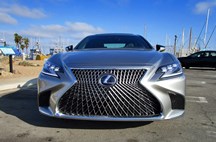
Ben Lewis grew up in Chicago, and after spending his formative years driving sideways in the winter – often intentionally – moved to sunny Southern California. He now enjoys sunny weather year-round — whether it is autocross driving, aerobatics, and learning to surf.

